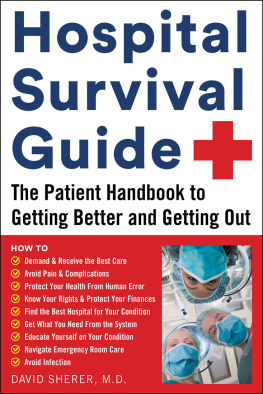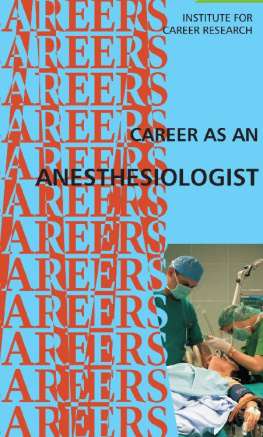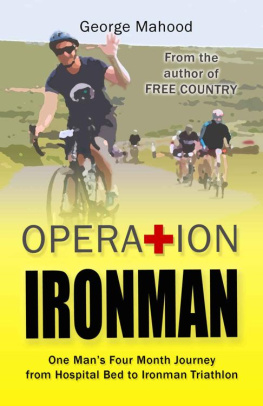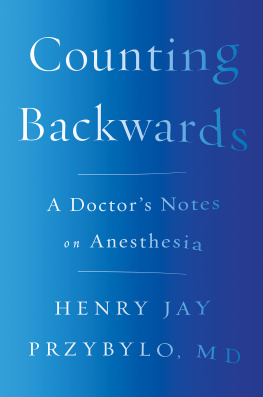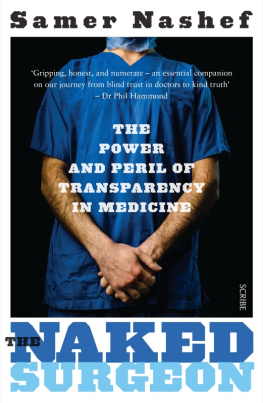Contents
Guide
Ether Day is dedicated to the libraries of Boston, including:
Boston Athenum
Boston Public Library
Francis A. Countway Library of Medicine, Harvard Medical
School
Houghton Library of Harvard University
Massachusetts Historical Society
Contents
I n 1845 the New York Daily Tribune published a detailed account of an amputation. The operation took place at New York Hospital, a five-acre nest of low brick buildings, located on what is now Lower Broadway. The patient was a young man, cradled tenderly the whole time by his father and at the same time held firmlyand brusquelyin place by the attendants. As the surgeonsthere were twomade their cuts, the boys screams were so full of misery that everyone who could left the room. The first part of the operation complete, the young man watched with glazed agony as the chief surgeon pushed a saw past the sliced muscles, still twitching, and listened as the blade cut through the bone in three heavy passes, back and forth. That was the only noise in the room, for the boy had stopped screaming.
A scant four blocks up the street at the cavernous Broadway Tabernacle theater, close to four thousand people were howling with laughter at the antics of people who had inhaled nitrous oxide gas in the Grand Exhibition staged for just that purpose.
The audiences favorite was the fellow who set upon the master of ceremonies, Gardner Q. Colton, with his fists. He had to be dragged off by the twelve stout men engaged, as the playbill explained, to prevent those who take the Gas, while under its influence, from injuring themselves or others. Under the influence of nitrous oxide, volunteers were known to be insensible to pain, doing things that hurt only after they came to.
The critic for the highbrow New Mirror, writing a column called Diary of Town Trifles, especially liked the young man who coolly undertook a promenade over the close-packed heads of the audience.
The impertinence of the idea seemed to me in the highest degree brilliant and delightful, applauded the critic, who then described other onstage escapades under the influence of laughing gas: One silly youth went to and fro, smirking and bowing, another did a scene of Richard the Third, and a tall, good-looking man laughed heartily, and suddenly stopped and demanded of the audience, in indignant rage, what they were laughing at!
They were laughing at everything. As far as the audience was concerned, that was the whole idea of the Grand Exhibition of the Effect Produced by inhaling Nitrous Oxide or EXHILARATING or LAUGHING GAS! A few of those present at the Tabernacle temporarily lost their senses from inhaling the gas, but hundreds in the audience lost their senses from laughing at the antics onstage. Some people walked across heads, and some people had their heads walked on.
This is in truth a scientific entertainment, although we have our doubts whether the use of it will serve to advance the cause of science, stated the Tribunes report on the nitrous oxide demonstration. But the Tribune was offoff by a scant four blocks in some uptown version of glazed agony. Any one of the four thousand people at the Broadway Tabernacle on that day in 1845 could have made the discovery that nitrous oxide was, on the contrary, at the core of the very greatest advance that the cause of science could receive. A couple of whiffs would have helped separate that boy at New York Hospital from the pain of surgery.
His operation was like any other between the beginning of time and Ether Day or, more pointedly, between the middle of 1800 and October 16, 1846, an era when help that was desperately required in hospitals was dismissed as a joke called laughing gas. During the same years, nitrous oxide was joined in the world of young fun by ether, a chemical with similar powers. Each one could make people insensible long enough for an operation, but ether was the stronger of the two. The laughing gas joke did not begin with the discovery of these substances. It began in 1800, when the English chemist Humphry Davy stated straight out in a well-received book: As nitrous oxide in its extensive operation appears capable of destroying physical pain, it may probably be used with advantage during surgical operations.
No one took his suggestion, however. That was the laughing-gas joke. For almost fifty years, all over the United States and all over the world, the art of surgery was stranded on the screams of its patients. In an operating room in New York a young boy fell silent from the horror, and in some other place the brilliant Humphry Davy was duly knighted by the Crown and idolized by commoners, but meanwhile, the wisest thing he ever said was ignored, amid all the laughter that followed nitrous oxide and ether around.
O n Friday, October 16, 1846, only one operation was scheduled at Massachusetts General Hospital.
That was not unusual: At Mass General, the third most active center of surgery in the country, operations averaged only about two per week from the 1820s through the mid1840s. Operations were special events in that eraa long ordeal of an era that was to end on that very day.
The patient, a housepainter named Gilbert Abbott, had been admitted to Mass General earlier that week, expecting to have a large growth cut from the side of his neck. It was the most unremarkable of cases, except that its very predictability suited it to another purpose entirely. With the Gilbert Abbott case, the chief surgeon at the most renowned hospital in New England decided to give William T. G. Mortona twenty-seven-year-old dentist whose salient characteristic was an excess of charma patient on whom to demonstrate a secret compound that promised painless surgery.
The day before the operation was to take place, Morton had received a letter from the hospital: a letter he had been hoping to receive.
Dear Sir, it began, I write at the request of Dr. J. C. Warren to invite you to be present on Friday morning at ten oclock, to administer to a patient, then to be operated on, the preparation which you have invented to diminish the sensibility to pain. The letter was signed by the house surgeon at Mass General, C. F. Heywood, but the invitation had come from the hospitals chief of surgery, John Collins Warren, the veritable dean of surgery in the United States.
Mortons immediate reaction was fearpanic, in factthat pain wouldnt be the only thing hed kill on Friday morning. He had tested his preparation on a few dozen of his dental patients during tooth extractions, but he didnt know whether the same amount would be sufficient in a medical operation, whether more of it would kill the patient, or whether the apparatus he used had any flaw that might allow for an accidental poisoning. In fact Dr. Morton didnt know much as he held Heywoods note in his hands, except that Dr. John C. Warren would be watching his every move the next morning at ten.
And Dr. John C. Warrens salient characteristic was an utter absence of charm.
Mortons secret concoction was made of exactly two ingredients: first, sulfuric ether, a common liquid compound with a sweet pungency; and second, oil of orange to disguise the smell of sulfuric etherthats what made it a secret, and thats what made it Mortons. There are other compounds known as ethers, such as chloric ether (a rather sinister cousin to the sulfuric form). However, unadorned with a prefix, ether refers to sulfuric ether.
In early experiments Mortons dental patients had inhaled ether fumes from a cloth doused with the liquid. Morton soon replaced the cloth with a more elaborate inhaling apparatus that gave him greater control in two ways: over the delivery of fumes to the patient and, more to the point, over the commercial potential of his discovery in the medical world. In neither case did William Morton quite understand the thing that he was trying to control, but he had his apparatus with which to attack them both, and with it under his arm he went rushing into the street upon receiving his letter from Mass General.




